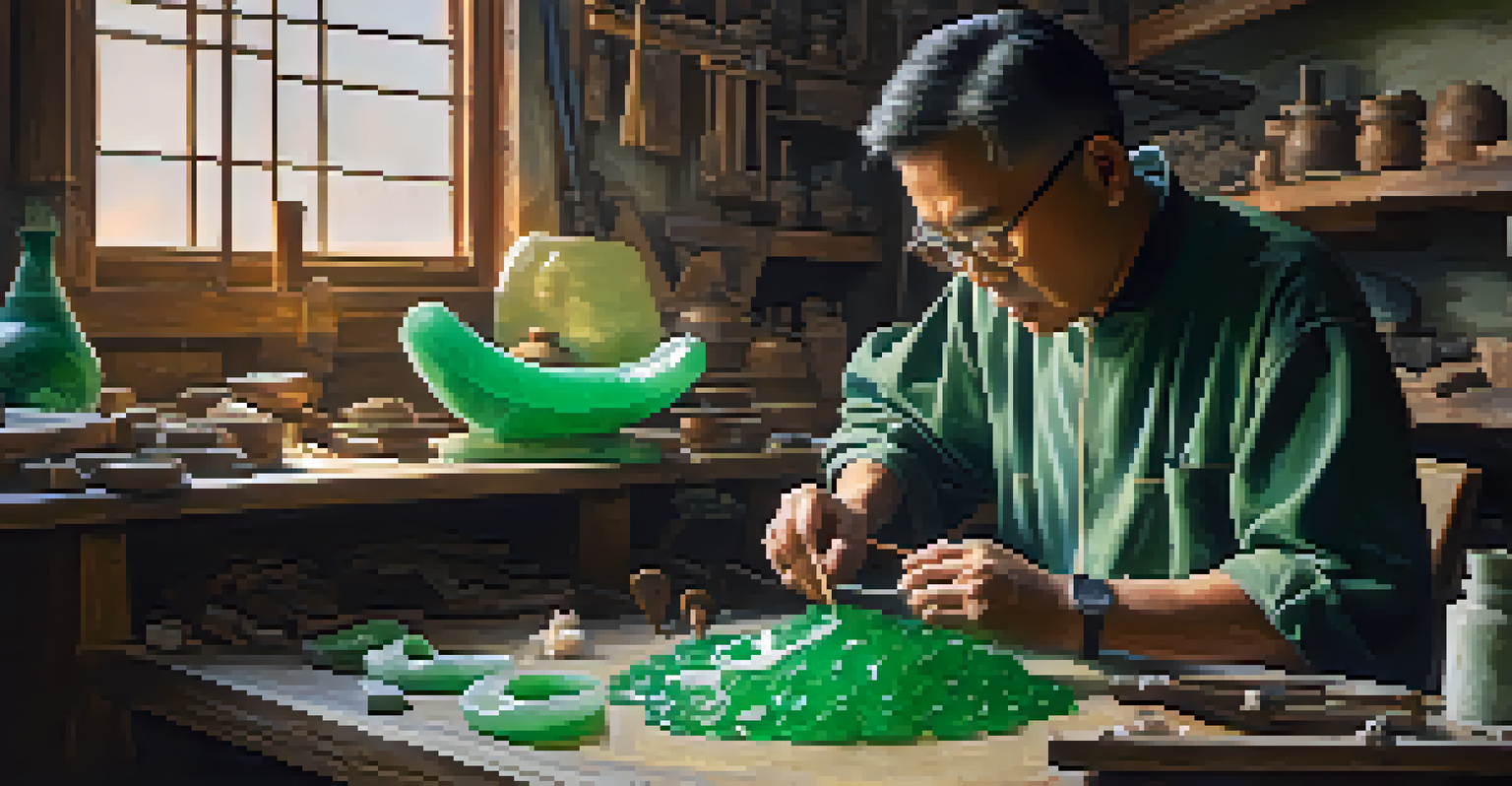Cultural Narratives: The Role of Carving in Heritage

Understanding Cultural Narratives and Their Importance
Cultural narratives are the stories and beliefs that define a group of people. They convey shared values, traditions, and experiences, connecting individuals to their heritage. These narratives often shape how communities view themselves and the world around them.
Art is the most beautiful of all lies; it is a narrative through which cultures express their deepest truths.
One compelling way these narratives are expressed is through art forms like carving. Carving serves as a tangible representation of cultural identity, allowing artisans to convey stories and meanings through their work. Whether it’s a wooden totem or a stone sculpture, each piece can tell a unique story.
Ultimately, the importance of cultural narratives lies in their ability to foster understanding and appreciation for diversity. By exploring these narratives, we learn about different worldviews and histories, enriching our own perspectives in the process.
The Historical Roots of Carving in Various Cultures
Carving has a rich history across many cultures, often linked to spiritual beliefs and rituals. For example, Indigenous peoples of North America have used carving to create masks and totem poles that represent ancestral stories and spiritual connections. These crafts not only serve decorative purposes but also play vital roles in cultural ceremonies.

Similarly, in African cultures, carving is often seen in the creation of masks used in traditional dances and storytelling. Each mask is meticulously crafted, embodying the spirit of the character it represents, thus playing an essential role in preserving cultural history.
Cultural Narratives Shape Identity
Cultural narratives define communities by conveying shared values and experiences, fostering a sense of belonging.
These historical roots highlight how carving transcends mere artistry; it is a medium through which communities celebrate their identity and history. Understanding these origins helps us appreciate the depth of meaning behind each carved piece.
Techniques and Materials Used in Carving
Carving techniques can vary significantly between cultures, each with its own unique tools and materials. For instance, wood carving often involves chisels and knives, while stone carving might require chisels and hammers for more durable creations. The choice of material is often tied to the culture's resources and traditions.
Every piece of art tells a story; it is a reflection of the artist's heritage, culture, and aspirations.
In Polynesian cultures, for example, craftsmen may use native woods to create intricate designs in canoes or weapons, reflecting both functionality and artistry. Meanwhile, in Asia, jade carving is revered for its beauty and symbolic significance, as jade is considered to bring good fortune.
These techniques and materials are not just practical choices; they carry cultural significance, reflecting the values and resources of the community. This connection between technique, material, and culture is what makes carving a powerful medium for narrative expression.
Symbolism in Carved Artworks
Symbolism plays a crucial role in carving, allowing artists to embed deeper meanings into their works. Each carved figure or motif can represent a specific idea, value, or story. For example, a carved eagle may symbolize freedom, while a serpent could represent transformation or rebirth.
In many cultures, these symbols are passed down through generations, maintaining continuity of cultural narratives. When a carver creates a piece, they often draw from a rich tapestry of symbols that resonate with their community's beliefs, thus ensuring the artwork is both personal and communal.
Carving as a Storytelling Medium
Carving serves not only as art but also as a visual representation of cultural stories and traditions.
Understanding the symbolism in carved artworks encourages viewers to engage with these pieces on a deeper level. It transforms a simple sculpture into a gateway to exploring the narratives and values of the culture it represents.
The Role of Carving in Oral Traditions
Oral traditions are integral to many cultures, serving as a means of storytelling and preserving history. Carving complements these traditions by providing a visual representation of the stories told. For instance, a carved panel might depict a legendary hero, enriching the oral tales passed down through generations.
In some Indigenous cultures, storytellers use carved objects to anchor their narratives, making the stories more relatable and memorable. The physical presence of a carved piece can invoke emotions and connections, bridging the gap between the past and present.
By intertwining carving with oral traditions, communities create a multi-dimensional storytelling experience. This fusion of visual and verbal narratives ensures that cultural stories are preserved and celebrated.
Modern Adaptations of Traditional Carving
As cultures evolve, so do their artistic expressions, including carving. Modern artisans often blend traditional techniques with contemporary themes, resulting in innovative works that resonate with both old and new audiences. For example, a carver might create a piece that reflects modern societal issues while employing ancestral techniques.
This adaptation is not just about aesthetics; it’s a way for artisans to keep their cultural narratives alive in a rapidly changing world. By integrating modern influences, they invite a new generation to engage with their heritage and appreciate its relevance today.
Modern Adaptations Keep Heritage Alive
Modern artisans blend traditional carving techniques with contemporary themes, ensuring cultural narratives remain relevant.
Such modern adaptations demonstrate the dynamic nature of culture, showing that heritage is not static but continually evolving. This evolution keeps cultural narratives vibrant and accessible, ensuring their survival for future generations.
Preserving Heritage Through Carving
Preserving heritage is a collective responsibility, and carving plays a vital role in this effort. By keeping traditional carving practices alive, communities can maintain a connection to their past. Workshops and cultural programs often focus on teaching these techniques to younger generations, ensuring that skills are passed down.
Moreover, carving can serve as a tool for cultural exchange, fostering understanding and appreciation among different communities. When people from diverse backgrounds engage with carving, they learn about its significance and the stories behind it, enriching their own cultural experiences.

Ultimately, the preservation of heritage through carving is about more than just maintaining techniques; it’s about keeping the narratives alive. These stories are essential in shaping identities and fostering a sense of belonging in a multicultural world.